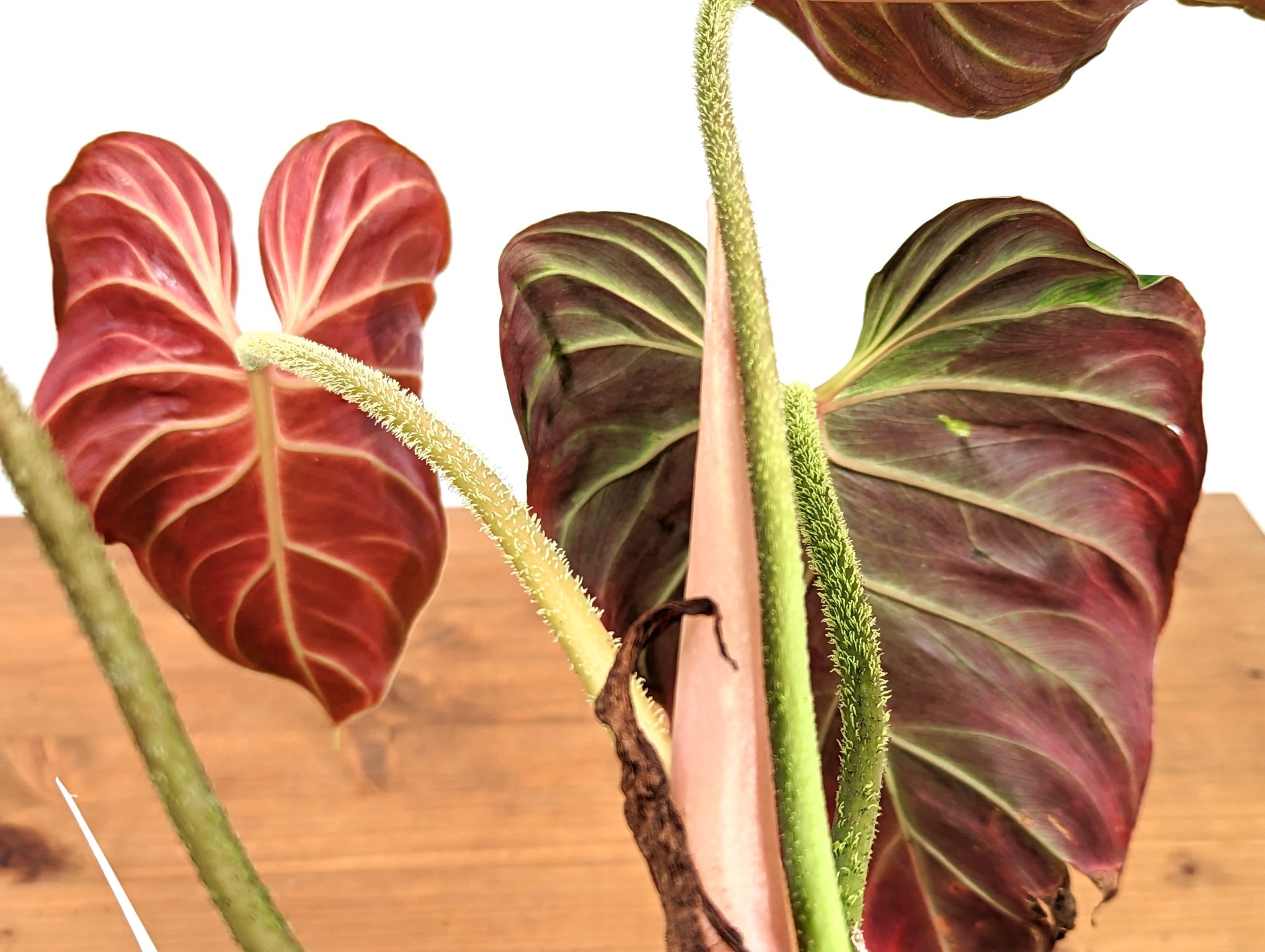-
How to care for your Philodendron
-
Feeding your Philodendron
-
Common Philodendron Issues
-
Are Philodendron Pet Friendly?
How to care for your Philodendron
Light
Your Philodendron plant will do best in a location with medium to bright indirect light. That means no direct sun rays, which can cause leaf burn. It is possible to slowly acclimate most Philodendron sp. to full sun (especially Ring of Fire). If you do not have a suitable location with appropriate natural lighting, consider using a grow light to supplement your plant's light requirements. When Philodendron lack sufficient lighting, they will become "leggy" with extended petioles and longer inter-nodal spaces as the plant searches for light.
Water
Philodendron do not love being wet, which will lead to root rot. Philodendron soil can tolerate intermittent periods of dryness, though ideally, the soil should neer be 100% dry. Water when 25-50% of the soil is dry (top 1-2" of soil in a 4" pot).
Humidity
Philodendron are tropical plants that thrive in high humidity. They are typically found growing up trees with their aerial roots grown into the bark. The more moisture you provide your Philodendron, the more aerial root growth you will notice. Higher than ambient humidity can be achieved with a mister, humidifier, or a pebble tray to hold water. In dryer climates, staking may be necessary for Philodendrons that are indeterminate growers (vs Self-heading varieties).
Temperature
Philodendron prefer warmer temperatures in the 65-85 degree range. In cooler environments you may expect the plant to grow a little slower. This plant is likely to suffer cold damage at temperatures below 50 degrees. Extreme heat will stunt the plant's growth.
Feeding your Philodendron
Philodendron, like all plants, require fertilizer to thrive. Look for a product with an N-P-K (nitrogen (N), phosphorous (P), potassium (K)) value of 10-10-10 or 6-12-6 or 3-1-2 and use it to feed your plant once a month from spring through summer. If your plant leaves begin to yellow near th edges with proper watering, there may be a buildup of salts in the soil, reduce fertilizing and flush your pot with water to help remove the salts. These plants do not require fertilizer during dormant winter months. When fertilizing your plant, ensure the soil is moist (not dry) to avoid burning the plant.Common Philodendron Issues
Leggy PetiolesIf your plant is growing "lanky" or long petioles with larger spaces between leaves it is likely your plant is not getting sufficient sunlight or proper duration. The other possibility, if lighting needs are being met, is a need for more fertilizer or plant nutrients to provide the plant the building blocks it needs to grow large and vigorous.
Dormancy
Your Philodendron will experience a dormant period in the winter months when it may drop leaves and stop producing new foliage (as a result of the plant's internal timer detecting less sunlight). During dormancy, keep your Philodendron in a warm spot with ample light. Reduce the frequency of watering but do not allow the potting mix to completely dry out. Reduce fertilizing by 50% until spring.
Limp Leaves
Be sure that all your plants natural needs are being met. This is most likely a watering issue (frequency or amount).
Yellow Leaves
If the edges of your leaves are turning yellow (from the outside inward) this is typically a clear sign of a watering issue or an accumulation of salt from fertilizers.
Common Pests of Philodendron Plants
A weakened or stressed Philodendron is more susceptible to pest infestations. Insects like spider mites or mealy bugs can drain your plant of moisture with their sucking mouth parts, they pierce the leaf and leave tell-tale circular scars behind. This problem quickly manifests itself by yellowing leaflets and fronds. Scale, mealybugs, and spider mites occur frequently in indoor conditions. If not managed early on, pests may proliferate and move to other plants. The piercing mouths of the insects exhaust your plant and accelerate yellowing, especially if your Philodendron is already unhealthy from poor lighting, a nutrient deficiency, or improper soil moisture.These wounds can also be an opening for opportunistic pathogens.
Regularly misting or wiping down your plants leaf surfaces will help not only the photosynthesis and overall health of your plant it will help reduce the likelihood that your plant becomes a target for pests.
